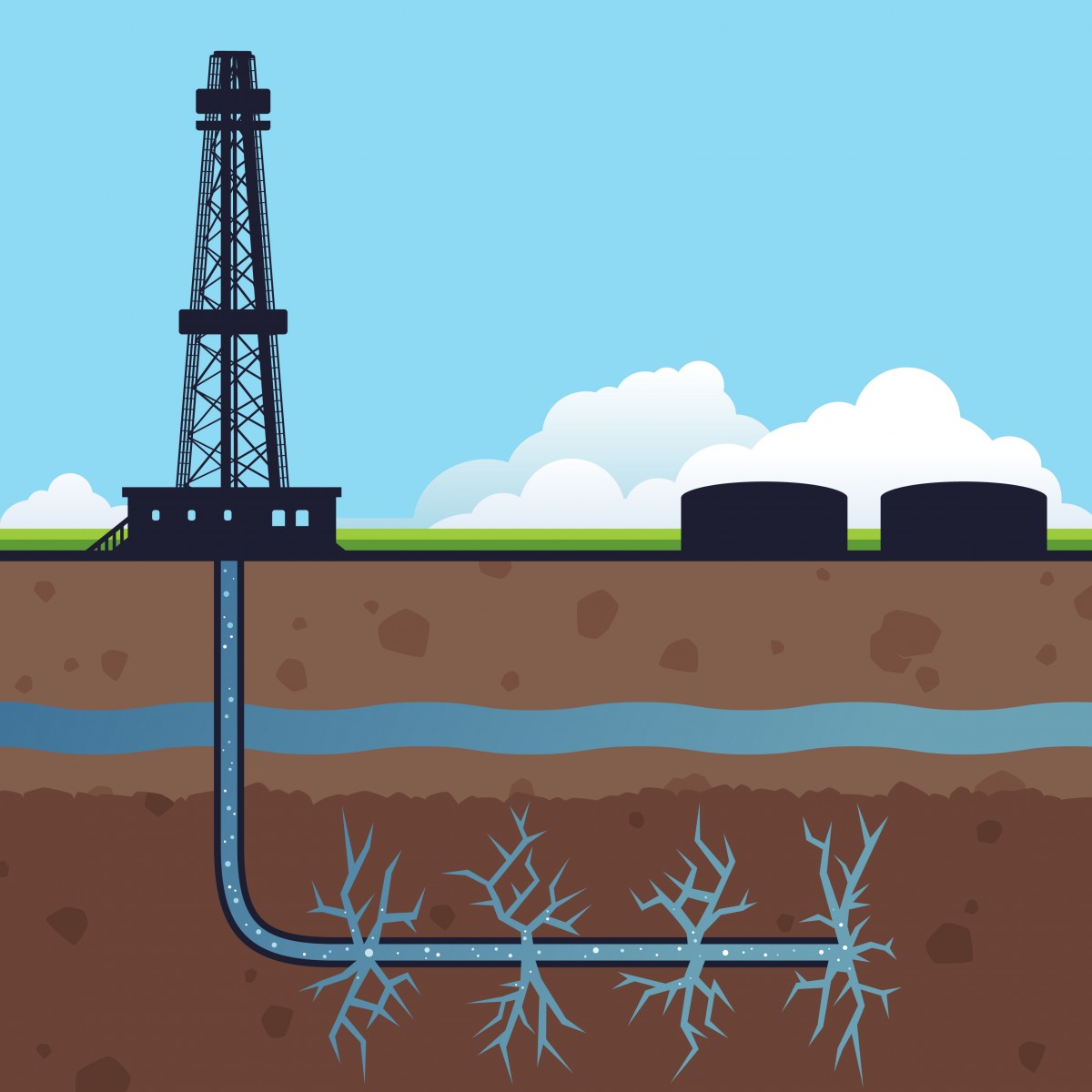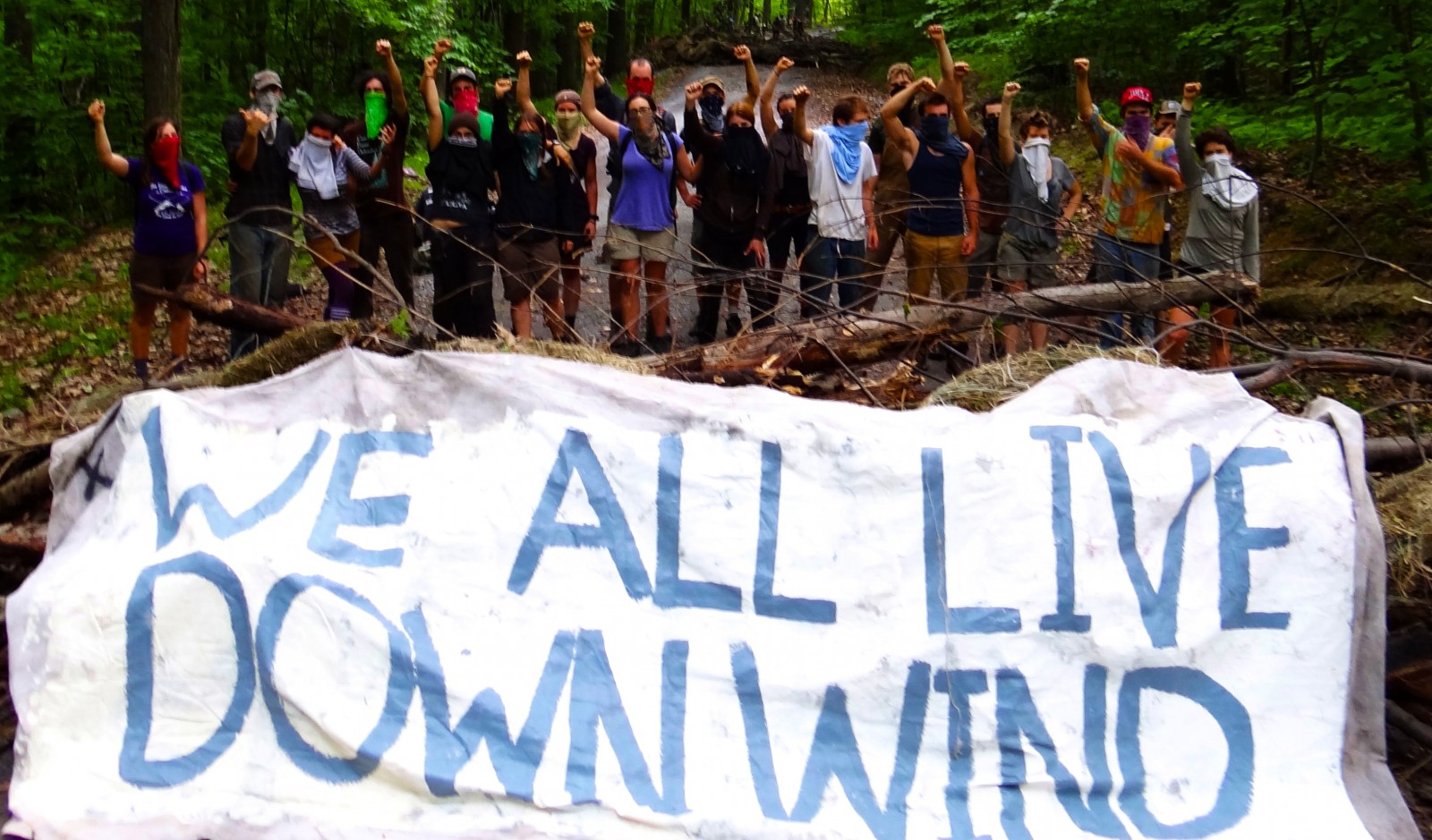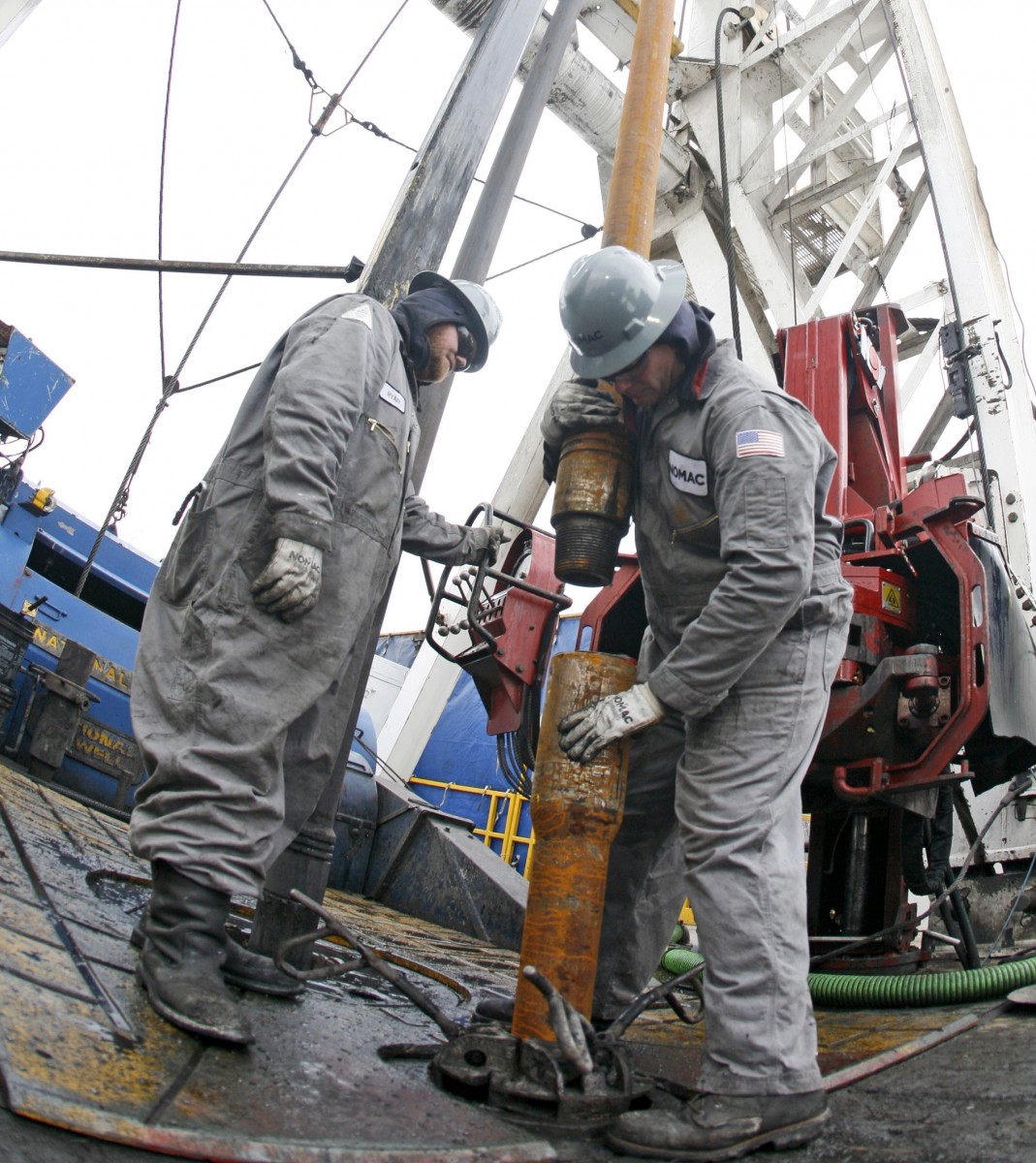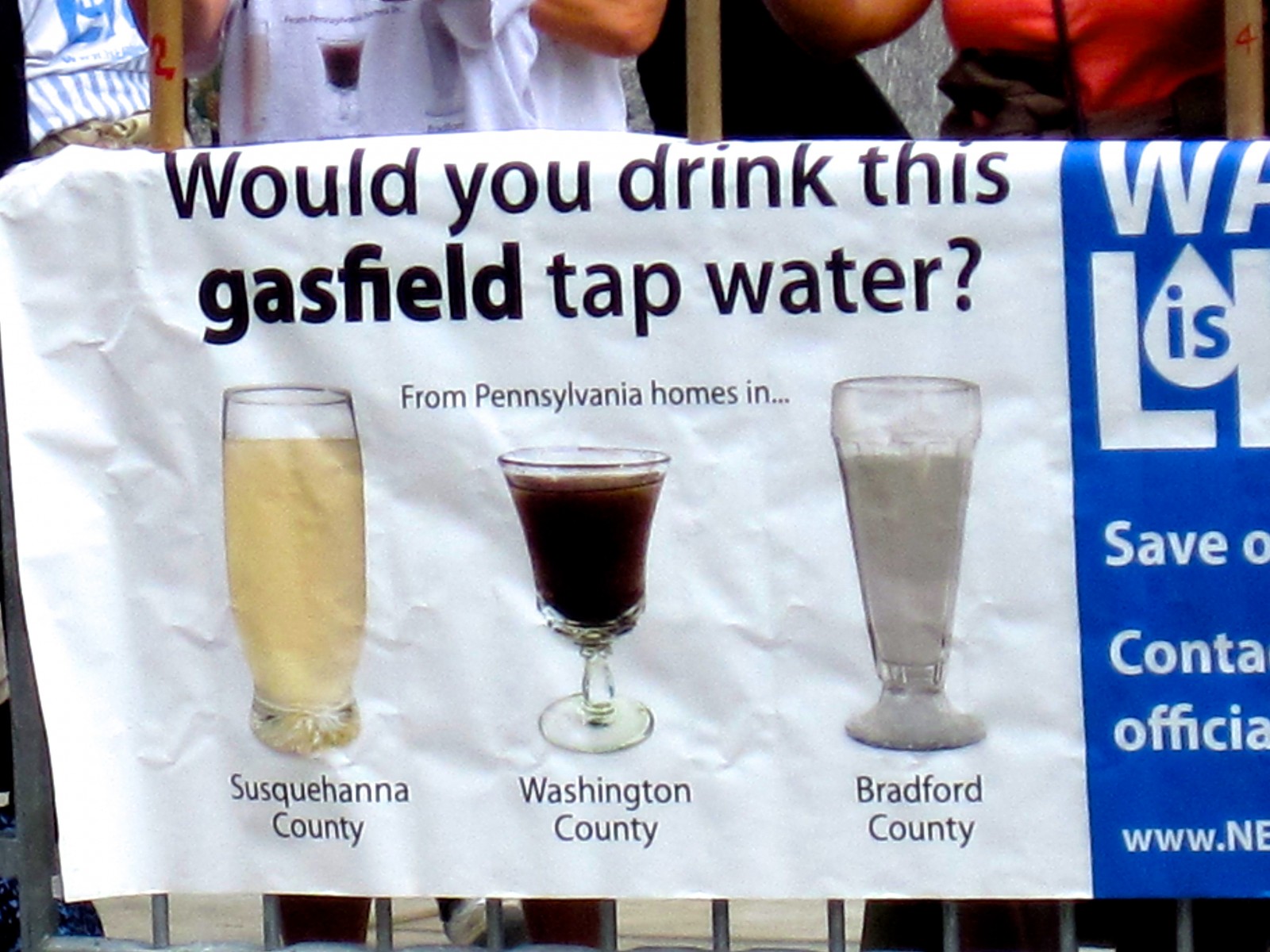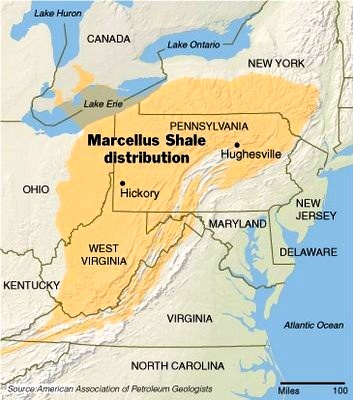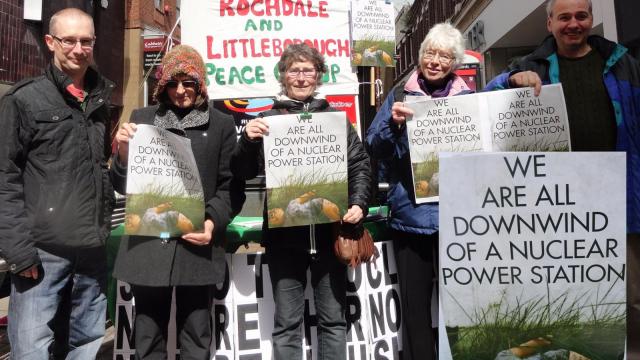
More than 70 years ago, a chemical attack was launched against Washington State and Nevada. It poisoned people, animals, everything that grew, breathed air, and drank water. The Marshall Islands were also struck. This formerly pristine Pacific atoll was branded “the most contaminated place in the world.” As their cancers developed, the victims of atomic testing and nuclear weapons development got a name: downwinders. What marked their tragedy was the darkness in which they were kept about what was being done to them. Proof of harm fell to them, not to the U.S. government agencies responsible.
Now, a new generation of downwinders is getting sick as an emerging industry pushes the next wonder technology — in this case, high-volume hydraulic fracturing. Whether they live in Texas, Colorado, or Pennsylvania, their symptoms are the same: rashes, nosebleeds, severe headaches, difficulty breathing, joint pain, intestinal illnesses, memory loss, and more. “In my opinion,” says Yuri Gorby of Rensselaer Polytechnic Institute, “what we see unfolding is a serious health crisis, one that is just beginning.”
The process of “fracking” starts by drilling a mile or more vertically, then outward laterally into 500-million-year-old shale formations, the remains of oceans that once flowed over parts of North America. Millions of gallons of chemical and sand-laced water are then propelled into the ground at high pressures, fracturing the shale and forcing the methane it contains out. With the release of that gas come thousands of gallons of contaminated water. This “flowback” fluid contains the original fracking chemicals, plus heavy metals and radioactive material that also lay safely buried in the shale.
The industry that uses this technology calls its product “natural gas,” but there’s nothing natural about up-ending half a billion years of safe storage of methane and everything that surrounds it. It is, in fact, an act of ecological violence around which alien infrastructures — compressor stations that compact the gas for pipeline transport, ponds of contaminated flowback, flare stacks that burn off gas impurities, diesel trucks in quantity, thousands of miles of pipelines, and more — have metastasized across rural America, pumping carcinogens and toxins into water, air, and soil.
Sixty percent of Pennsylvania lies over a huge shale sprawl called the Marcellus, and that has been in the fracking industry’s sights since 2008. The corporations that are exploiting the shale come to the state with lavish federal entitlements: exemptions from the Clean Air, Clean Water, and Clean Drinking Water Acts, as well as the Superfund Act, which requires cleanup of hazardous substances. The industry doesn’t have to call its trillions of gallons of annual waste “hazardous.” Instead, it uses euphemisms like “residual waste.” In addition, fracking companies are allowed to keep secret many of the chemicals they use.
Pennsylvania, in turn, adds its own privileges. A revolving door shuttles former legislators, governors, and officials from the state’s Department of Environmental Protection (DEP) into gas industry positions. The DEP itself is now the object of a lawsuit that charges the agency with producing deceptive lab reports, and then using them to dismiss homeowners’ complaints that shale gas corporations have contaminated their water, making them sick. The people I interviewed have their own nickname for the DEP: “Don’t Expect Protection.”
The Downwinders
Randy Moyer is a pleasant-faced, bearded 49-year-old whose drawl reminds you that Portage, his hardscrabble hometown in southwestern Pennsylvania, is part of Appalachia. He worked 18 years — until gasoline prices got too steep — driving his own rigs to haul waste in New York and New Jersey. Then what looked like a great opportunity presented itself: $25 an hour working for a hydraulic-fracturing subcontractor in northeastern Pennsylvania.
In addition to hauling fracking liquid, water, and waste, Randy also did what’s called, with no irony, “environmental.” He climbed into large vats to squeegee out the remains of fracking fluid. He also cleaned the huge mats laid down around the wells to even the ground out for truck traffic. Those mats get saturated with “drilling mud,” a viscous, chemical-laden fluid that eases the passage of the drills into the shale. What his employer never told him was that the drilling mud, as well as the wastewater from fracking, is not only highly toxic, but radioactive.
In the wee hours of a very cold day in November 2011, he stood in a huge basin at a well site, washing 1,000 mats with high-pressure hoses, taking breaks every so often to warm his feet in his truck. “I took off my shoes and my feet were as red as a tomato,” he told me. When the air from the heater hit them, he “nearly went through the roof.”
Once at home, he scrubbed his feet, but the excruciating pain didn’t abate. A “rash” that covered his feet soon spread up to his torso. A year and a half later, the skin inflammation still recurs. His upper lip repeatedly swells. A couple of times his tongue swelled so large that he had press it down with a spoon to be able to breathe. “I’ve been fried for over 13 months with this stuff,” he told me in late January. “I can just imagine what hell is like. It feels like I’m absolutely on fire.”
Family and friends have taken Moyer to emergency rooms at least four times. He has consulted more than 40 doctors. No one can say what caused the rashes, or his headaches, migraines, chest pain, and irregular heartbeat, or the shooting pains down his back and legs, his blurred vision, vertigo, memory loss, the constant white noise in his ears, and the breathing troubles that require him to stash inhalers throughout his small apartment.
In an earlier era, workers’ illnesses fell into the realm of “industrial medicine.” But these days, when it comes to the U.S. fracking industry, the canaries aren’t restricted to the coalmines. People like Randy seem to be the harbingers of what happens when a toxic environment is no longer buried miles beneath the earth. The gas fields that evidently poisoned him are located near thriving communities.
“For just about every other industry I can imagine,” says Anthony Ingraffea of Cornell University, co-author of a landmark study that established fracking’s colossal greenhouse-gas footprint, “from making paint, building a toaster, building an automobile, those traditional kinds of industry occur in a zoned industrial area, inside of buildings, separated from home and farm, separated from schools.” By contrast, natural gas corporations, he says, “are imposing on us the requirement to locate our homes, hospitals and schools inside their industrial space.”
The Death and Life of Little Rose
Little Rose was Angel Smith’s favorite horse. When the vet shod her, Angel told me proudly, she obligingly lifted the next hoof as soon as the previous one was done. “Wanna eat, Rosie?” Angel would ask, and Rosie would nod her head. “Are you sure?” Angel would tease, and Rosie would raise one foreleg, clicking her teeth together. In Clearville, just south of Portage, Angel rode Little Rose in parades, carrying the family’s American flag.
In 2002, a “landman” knocked on the door and asked Angel and her husband Wayne to lease the gas rights of their 115-acre farm to the Pennsylvania General Energy company. At first, he was polite, but then he started bullying. “All your neighbors have signed. If you don’t, we’ll just suck the gas from under your land.” Perhaps from weariness and a lack of information (almost no one outside the industry then knew anything about high-volume hydraulic fracturing), they agreed. Drilling began in 2002 on neighbors’ land and in 2005 on the Smith’s.
On January 30, 2007, Little Rose staggered, fell, and couldn’t get up. Her legs moved spasmodically. When Wayne and Angel dragged her to a sitting position, she’d just collapse again. “I called every vet in the phone book,” says Angel. “They all said, ‘Shoot her.’” The couple couldn’t bear to do it. After two days, a neighbor shot her. “It was our choice,” says Angel, her voice breaking. “She was my best friend.”
Soon, the Smiths’ cows began showing similar symptoms. Those that didn’t die began aborting or giving birth to dead calves. All the chickens died, too. So did the barn cats. And so did three beloved dogs, none of them old, all previously healthy. A 2012 study by Michelle Bamberger and Cornell University pharmacology professor Robert Oswald indicates that, in the gas fields, these are typical symptoms in animals and often serve as early warning signs for their owners’ subsequent illnesses.
The Smiths asked the DEP to test their water. The agency told them that it was safe to drink, but Angel Smith says that subsequent testing by Pennsylvania State University investigators revealed high levels of arsenic.
Meanwhile, the couple began suffering from headaches, nosebleeds, fatigue, throat and eye irritation, and shortness of breath. Wayne’s belly began swelling oddly, even though, says Angel, he isn’t heavy. X-rays of his lungs showed scarring and calcium deposits. A blood analysis revealed cirrhosis of the liver. “Get him to stop drinking,” said the doctor who drew Angel aside after the results came in. “Wayne doesn’t drink,” she replied. Neither does Angel, who at 42 now has liver disease.
By the time the animals began dying, five high-volume wells had been drilled on neighbors’ land. Soon, water started bubbling up under their barn floor and an oily sheen and foam appeared on their pond. In 2008, a compressor station was built half a mile away. These facilities, which compress natural gas for pipeline transport, emit known carcinogens and toxins like benzene and toluene.
The Smiths say people they know elsewhere in Clearville have had similar health problems, as have their animals. For a while they thought their own animals’ troubles were over, but just this past February several cows aborted. The couple would like to move away, but can’t. No one will buy their land.
The Museum of Fracking
Unlike the Smiths, David and Linda Headley didn’t lease their land. In 2005, when they bought their farm in Smithfield, they opted not to pay for the gas rights under their land. The shallow gas drilling their parents had known seemed part of a bygone era and the expense hardly seemed worth the bother.
With its hills and valleys, the creek running through their land, and a spring that supplied them with water, the land seemed perfect for hiking, swimming, and raising their son Grant. Adam was born after all the trouble started.
Just as the couple had completed the purchase, the bulldozers moved in. The previous owner had leased the gas rights without telling them. And so they found themselves, as they would later put it, mere “caretakers” on a corporate estate.
Today, the Headleys’ property is a kind of museum of fracking. There are five wells, all with attendant tanks that separate liquids from the gas, and a brine tank where flowback is stored. Four of the wells are low-volume vertical ones, which use a fracking technology that predates today’s high-volume method. A couple minutes’ walk from the Headleys’ front door stands a high-volume well. A pipeline was drilled under their creek.
“Accidents” have been a constant. When the well closest to the house was fracked, their spring, which had abounded in vegetation, crawfish, and insects, went bad. The DEP told the Headleys, as it did the Smiths, that the water was still safe to drink. But, says David, “everything in the spring died and turned white.” Adam had just been born. “No way was I exposing my kids to that.” For two years he hauled water to the house from the homes of family and friends and then he had it connected to a city water line.
All the brine tanks have leaked toxic waste onto the Headley’s land. Contaminated soil from around the high-volume tank has been alternately stored in dumpsters and in an open pit next to the well. The Headleys begged the DEP to have it removed. David says an agency representative told them the waste would have to be tested for radioactivity first. Eventually, some of it was hauled away; the rest was buried under the Headleys’ land. The test for radioactivity is still pending, though David has his own Geiger counter which has measured high levels at the site of the well.
An independent environmental organization, Earthworks, included the Headleys among 55 households it surveyed in a recent study of health problems near gas facilities. Testing showed high levels of contaminants in the Headleys’ air, including chloromethane, a neurotoxin, and trichloroethene, a known carcinogen.
Perhaps more telling is the simple fact that everyone in the family is sick. Seventeen-year-old Grant has rashes that, like Randy Moyer’s, periodically appear on different parts of his body. Four-year-old Adam suffers from stomach cramps that make him scream. David says he and Linda have both had “terrible joint pain. It’s weird stuff, your left elbow, your right hip, then you’ll feel good for three days, and it’ll be your back.” At 42, with no previous family history of either arthritis or asthma, Linda has been diagnosed with both. Everyone has had nosebleeds — including the horses.
Five years into the Marcellus gas rush in this part of Pennsylvania, symptoms like Randy Moyer’s, the Smiths', and the Headleys' are increasingly common. Children are experiencing problems the young almost never have, like joint pain and forgetfulness. Animal disorders and deaths are widespread. The Earthworks study suggests that living closer to gas-field infrastructure increases the severity of 25 common symptoms, including skin rashes, difficulty breathing, and nausea.
Don’t Expect Protection
DEP whistleblowers have disclosed that the agency purposely restricts its chemical testing so as to reduce evidence of harm to landowners. A resident in southwestern Pennsylvania’s Washington County is suing the agency for failing fully to investigate the drilling-related air and water contamination that she says has made her sick. In connection with the lawsuit, Democratic state representative Jesse White has demanded that state and federal agencies investigate the DEP for “alleged misconduct and fraud.”
In the absence of any genuine state protection, independent scientists have been left to fill the gap. But as the industry careens forward, matching symptoms with potential causes is a constant catch-up effort. A 2011 study by Theo Colborn, founder of the Endocrine Disruption Exchange and recipient of the National Council for Science and Environment’s Lifetime Achievement Award, identified 353 industry chemicals that could damage the skin, the brain, the respiratory, gastrointestinal, immune, cardiovascular, and endocrine (hormone production) systems. Twenty-five percent of the chemicals found by the study could cause cancers.
David Brown is a veteran toxicologist and consultant for an independent environmental health organization, the Southwest Pennsylvania Environmental Health Project. According to him, there are four routes of exposure to gas-field chemicals: water, air, soil, and food. In other words, virtually everything that surrounds us.
Exposure to water comes from drinking, but showering and bathing makes possible water exposure through the skin and inhaling water vapor. “Air exposure is even more complicated,” says Brown. The impacts of contaminated air, for example, are greater during heavy activity. “Children running around,” he says, “are more apt to be exposed than older people.” What further complicates the emerging toxicology is that chemicals act not as single agents but synergistically. “The presence of one agent,” says Brown, “can increase the toxicity of another by several-fold.”
Brown deplores the government’s failures to heed citizens’ cries for help. “No one is asking, ‘What happened to you? Are there other people who have been affected in your area?’ I teach ethics. There’s a level of moral responsibility that we should have nationally. We seem to have decided that we need energy so badly... that we have in almost a passive sense identified individuals and areas to sacrifice.”
Circles of Trust
No one I interviewed in communities impacted by fracking in southwestern Pennsylvania drinks their water anymore. In fact, I came to think of a case of Poland Spring as a better house gift than any wine (and I wasn’t alone in that). Breathing the air is in a different universe of risk. You can’t bottle clean air, but you can donate air purifiers, as one interviewee, who prefers to be unnamed, has been doing.
Think of her as a creator of what a new Pennsylvania friend of mine calls “circles of trust.” The energy industry splits communities and families into warring factions. Such hostilities are easy to find, but in the midst of catastrophe I also found mutual assistance and a resurgence of the human drive for connection.
Ron Gulla, a John Deere heavy equipment salesman, is driven by fury at the corporation that ruined his soil — his was the second farm in Pennsylvania to be fracked — but also by deep feeling for the land: “A farm is just like raising a child. You take care of it, you nurture it, and you know when there are problems.”
Gulla credits Barbara Arindell with teaching him about the perils of shale gas development. (In 2008, Arindell founded Damascus Citizens for Sustainability, the East Coast's first center of information about the industry's dangers.) Now, Gulla is a central figure in an ever-widening network of people who are becoming their own documentarians. Everyone I interviewed brought out files of evidence to show me: photographs, videos, news reports, and their own written records of events.
Moreover, in the midst of ongoing stress, many have become activists. Linda Headley and Ron Gulla, for instance, traveled with other Pennsylvanians to Albany this past February to warn New York State officials not to endorse fracking. “A lot of people have said, ‘Why don’t you just walk away from this?’” says Gulla. “[But] I was raised to think that if there was something wrong, you would bring it to people’s attention.’”
“You have to believe things happen for a reason,” says David Headley. “It’s drawn so many people together we didn’t know before. You have these meetings, and you’re fighting [for] a common cause and you feel so close to the people you’re working with. Including you guys, the reporters. It’s made us like a big family. Really. You think you’re all alone, and somebody pops up. God always sends angels.”
Still, make no mistake: this is an alarming and growing public health emergency. “Short of relocating entire communities or banning fracking, ending airborne exposures cannot be done,” David Brown said in a recent address in New York State. “Our only option in Washington County... has been to try to find ways for residents to reduce their exposures and warn them when the air is especially dangerous to breathe.”
In the vacuum left by the state’s failure to offer protection to those living in fracking zones, volunteers, experts like Brown, and fledgling organizations like the Southwest Pennsylvania Environmental Health Project have become the new protectors of citizens’ health. Growing numbers of fracking victims, including Angel and Wayne Smith, are also suing gas corporations. “If I could go back to 2000, I’d show them the end of the road and say, ‘Don’t come back,’” Angel told me. “But we’re in the situation now. Fight and go forward.”
Originally published by TomDispatch
3 WAYS TO SHOW YOUR SUPPORT
- Log in to post comments

